Create and Use More Meaningful Team Collaboration Contracts
About This Page
Each PBL project involves teams of students collaborating together. Project Based Learning curriculum allows us to create opportunities for students to learn how to effectively collaborate on a team.
As PBL teachers, it’s essential that we support students in how they move through the collaborative aspects of our projects.
This page describes how I use the core restorative practice of talking circles to introduce the importance of collaboration, have students develop their team collaboration contract, and then use the contract to have students reflect on their collaboration throughout the project.
Student facing slides and handouts I made are linked through out this page. Adapt the materials according to your own academic setting and student needs.
Note: The contents of this page are based on an article I wrote for PBLWorks’ education blog titled: “How to Create More Meaningful Team Contracts”. You can read the article here, or by clicking the picture to the right.
Talking Circles to Create the Team Collaboration Contract
Talking circle where students discuss how to collaborate effectively while working together on a project.
Prior to putting students into their project teams, I facilitate a talking circle about collaboration. Topics discussed in these talking circles include:
The value of collaborating on a team.
The challenges of collaborating in a group.
How to collaborate effectively.
Here is the slide deck I made for this talking circle when we did the Power of Music Project in 2023.
Note: I often invite older students who have had class to participate in these talking circles.
During this talking circle, students:
Reflect on what does good collaboration look like by reviewing photos of students from the previous year collaborating on a project.
Students write down one word that represents good collaboration on an index card and share out to the class.
As students share these words, I add them to a “Good Collaboration Word Bank”.
Students then write one good/positive thing they are bringing to their group as they work together on the project.
Then students are placed in their new project groups. Groups move to a table and students share the positive thing they are bringing to their group.
Then, each team creates their Team Collaboration Contract by selecting three words from the Good Collaboration Word Bank that are important to them as they collaborate together. Students use this handout to create and sign their collaboration contract.
The index cards with the collaboration words students identified are placed onto a bulletin board titled “Our Collaboration Values”. When collaboration issues arise, the team contracts and this bulletin board are used to conference with students as a way to remind them of the conversations that occurred during the talking circle and help them consider how to navigate their issue moving forward.
Using the Team Collaboration Contracts
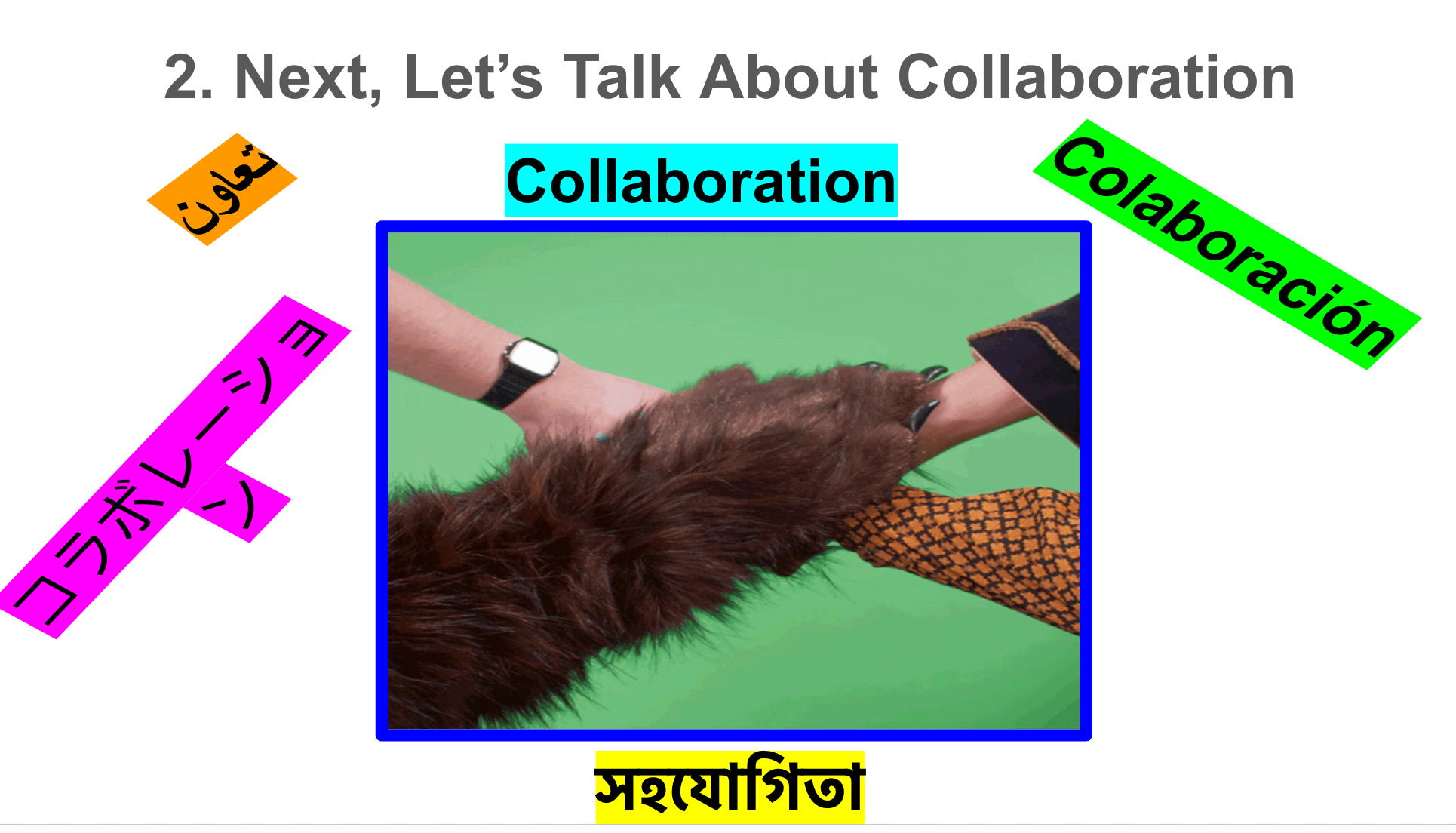
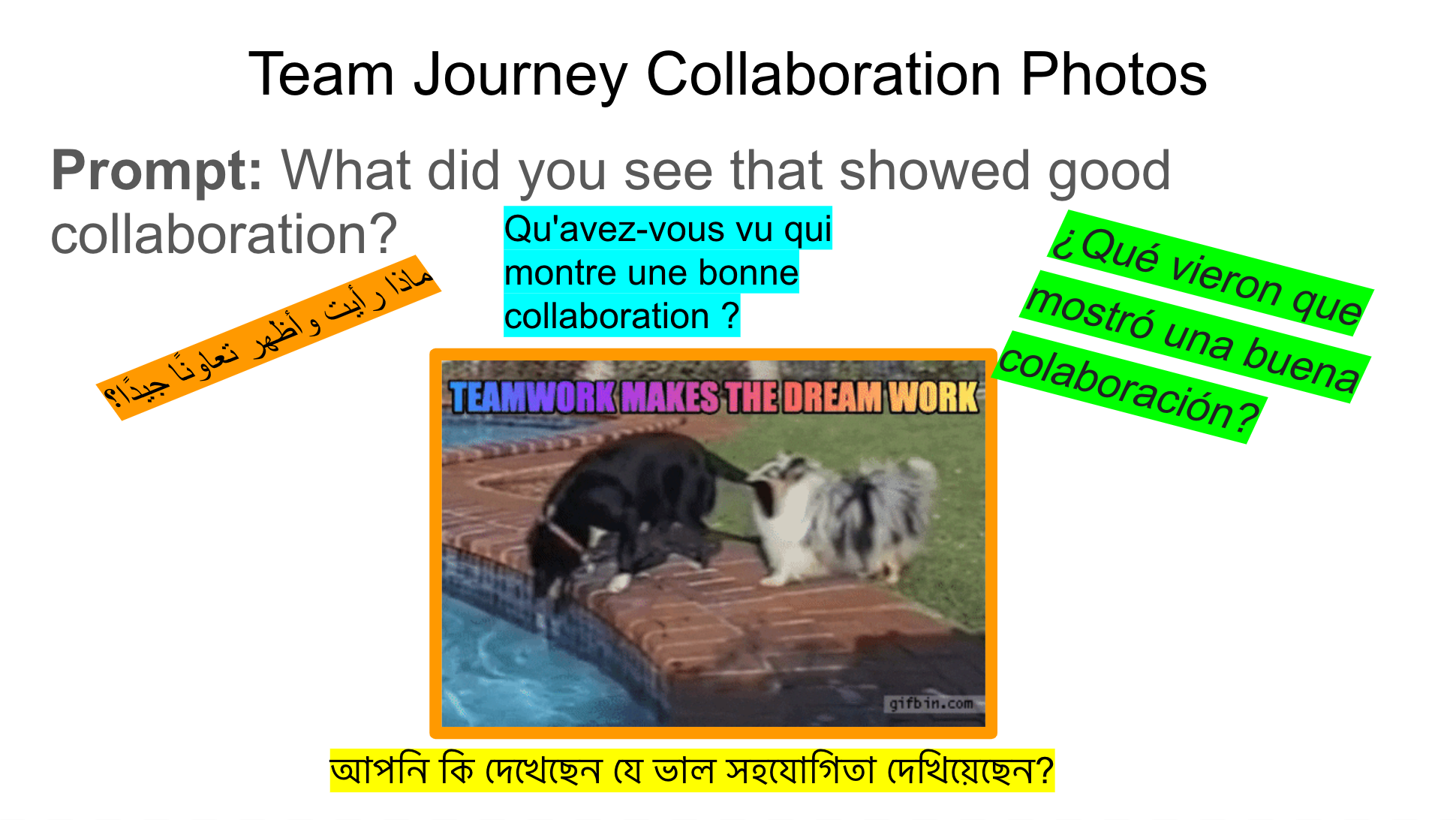
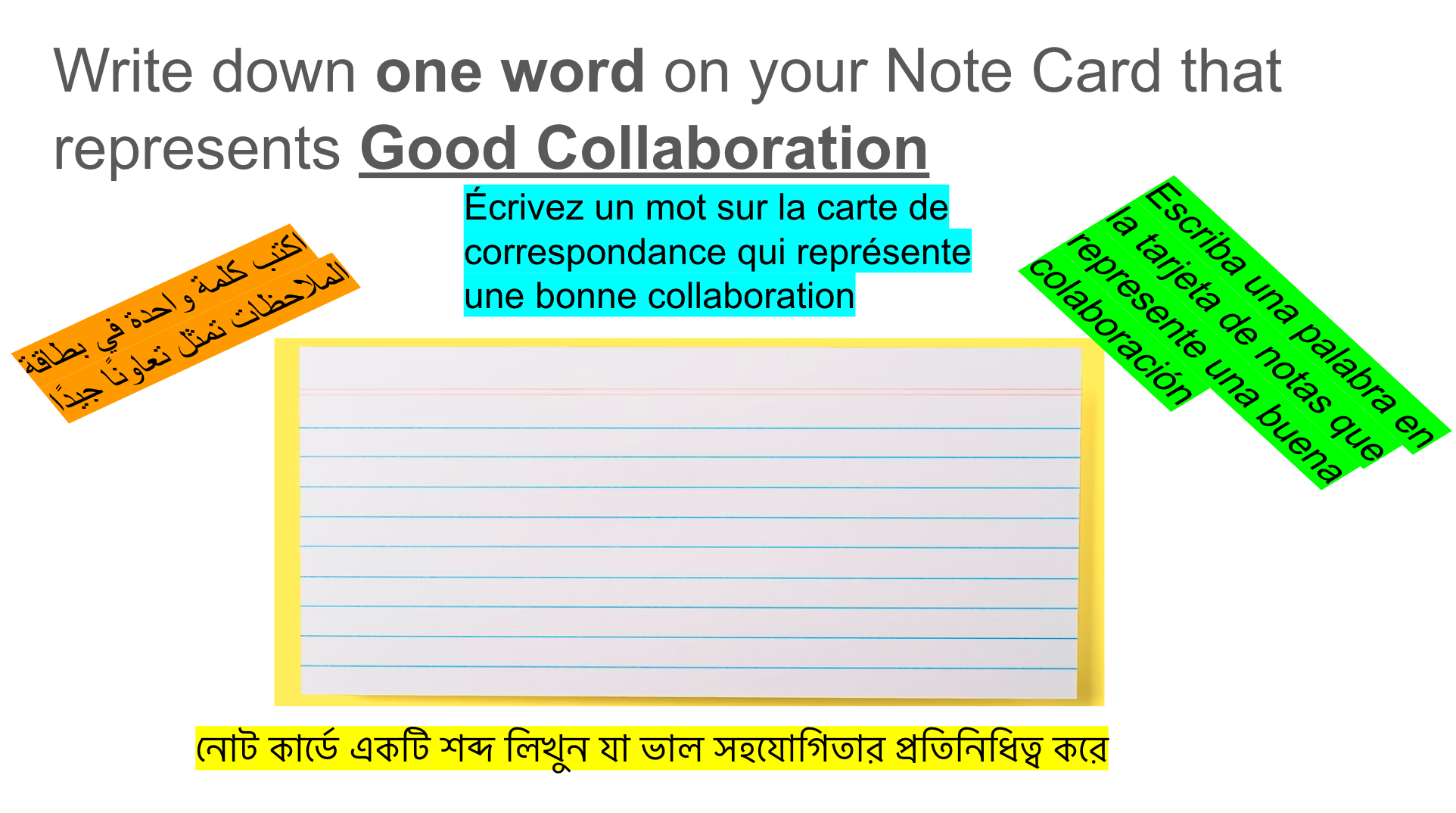
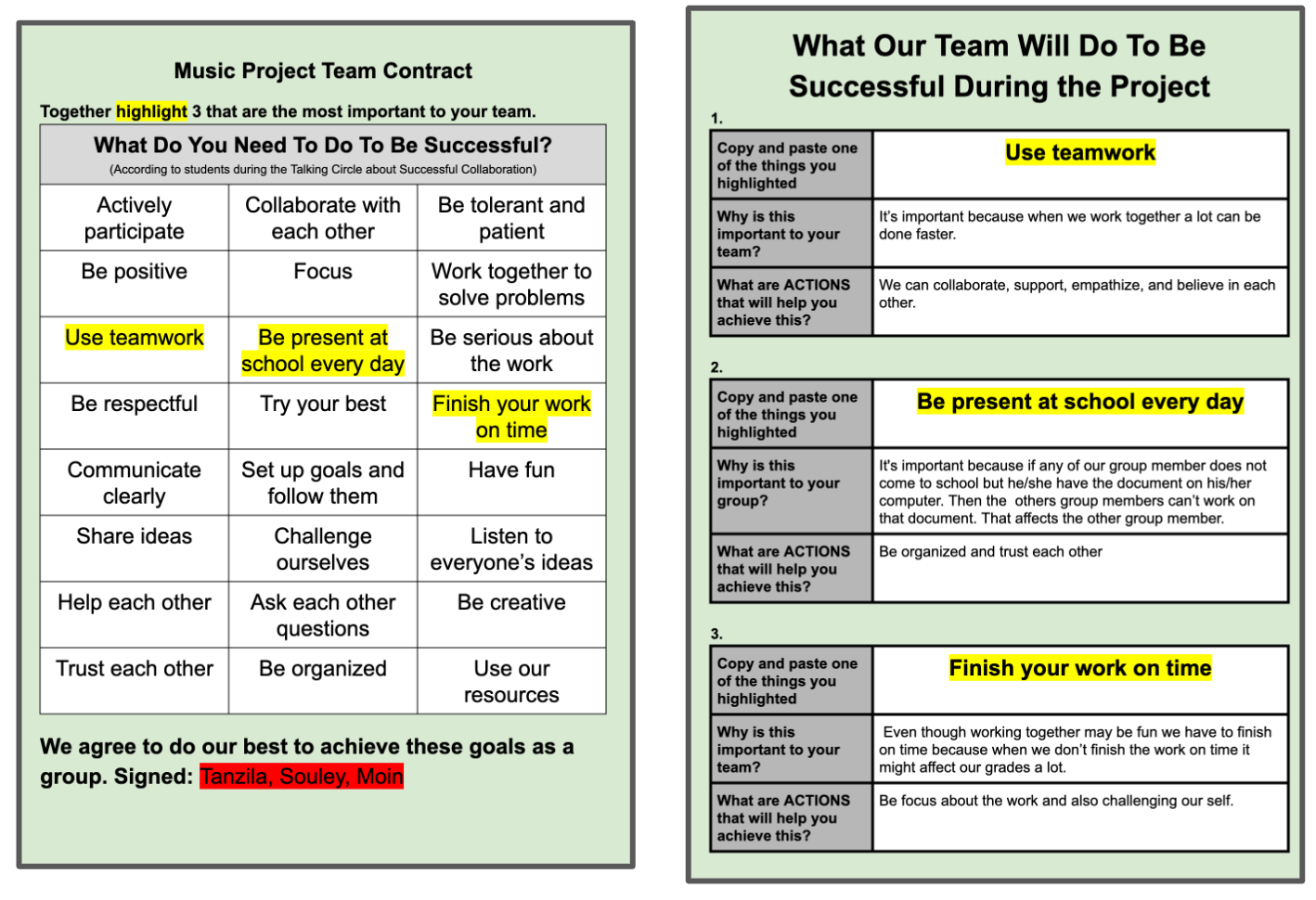

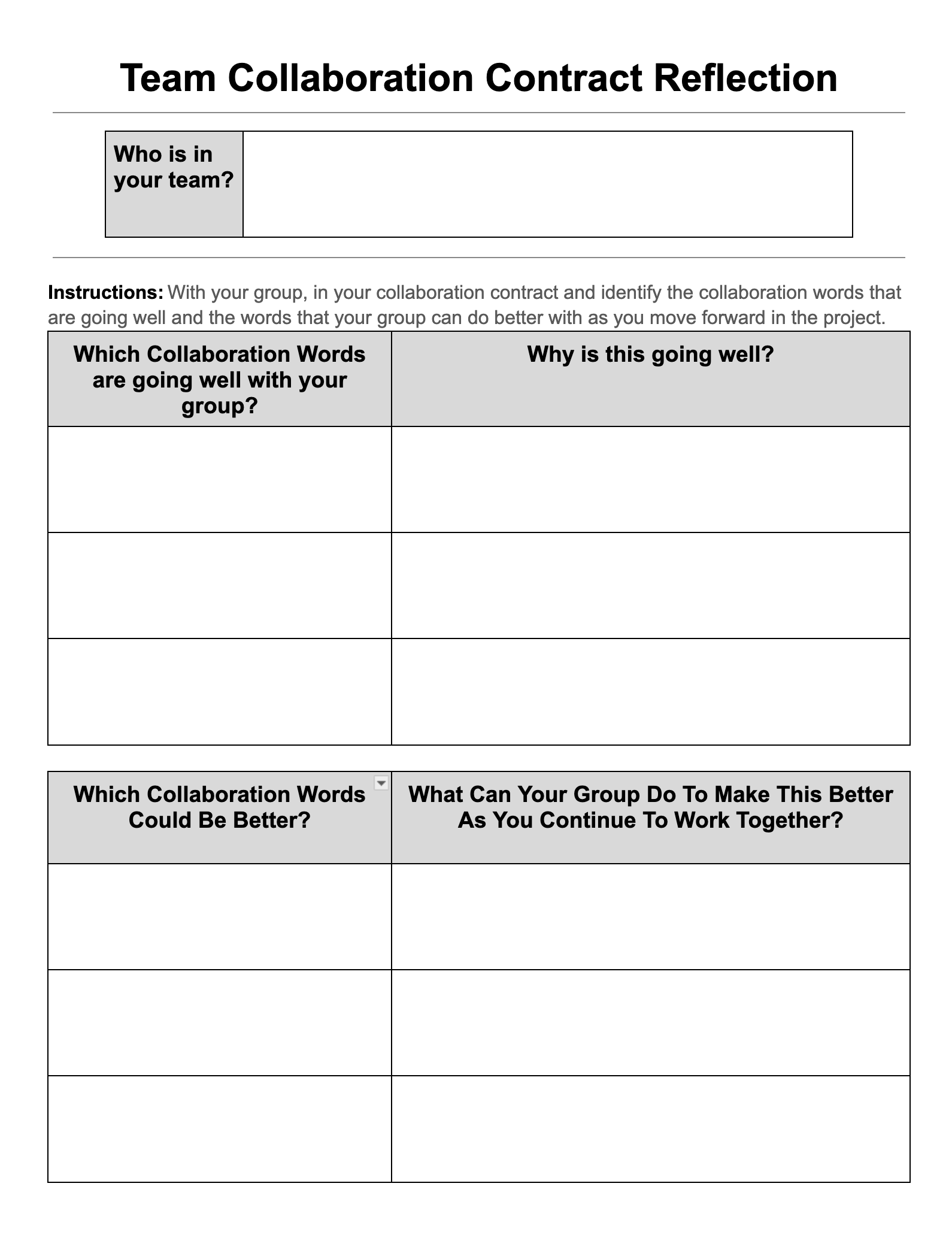
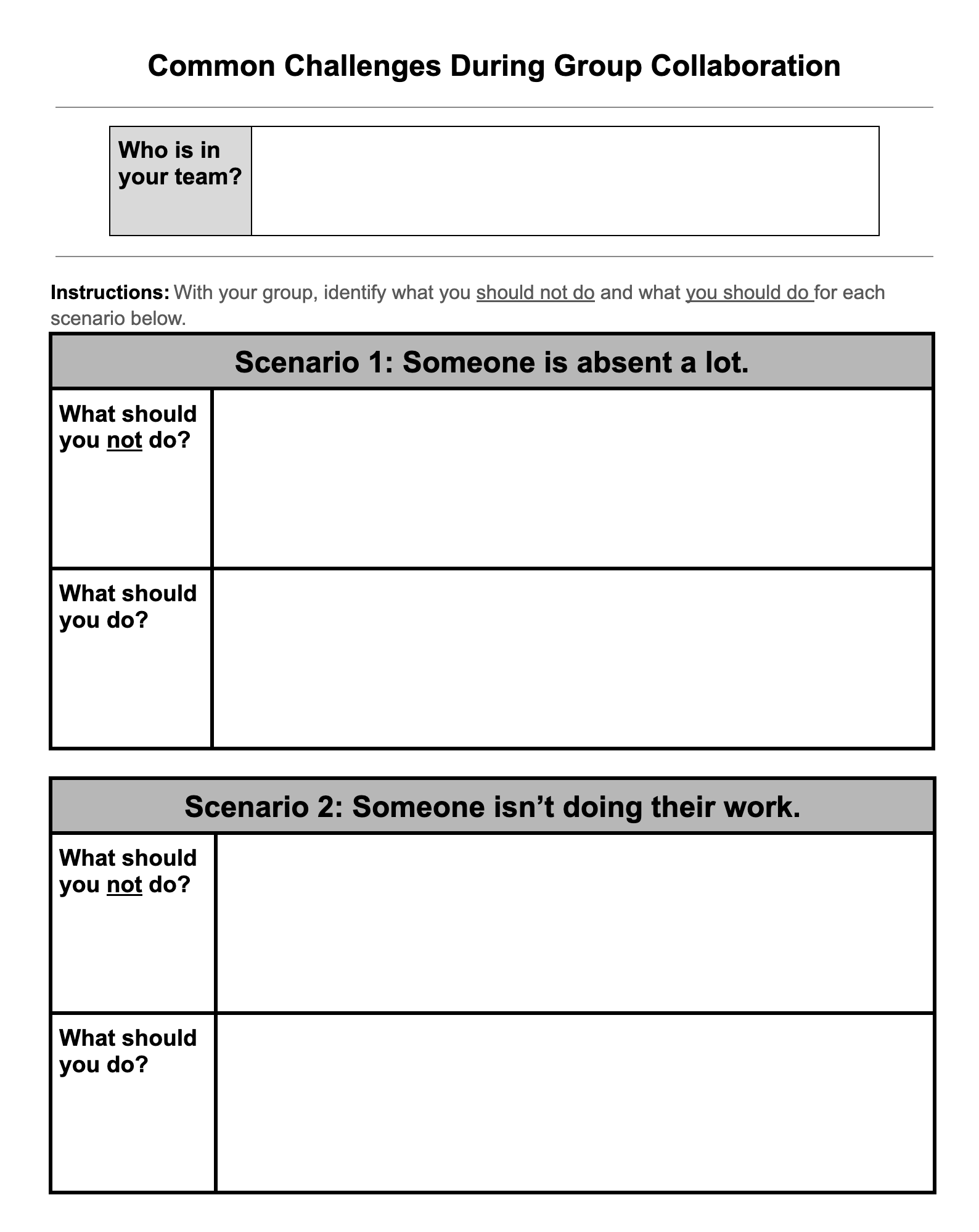
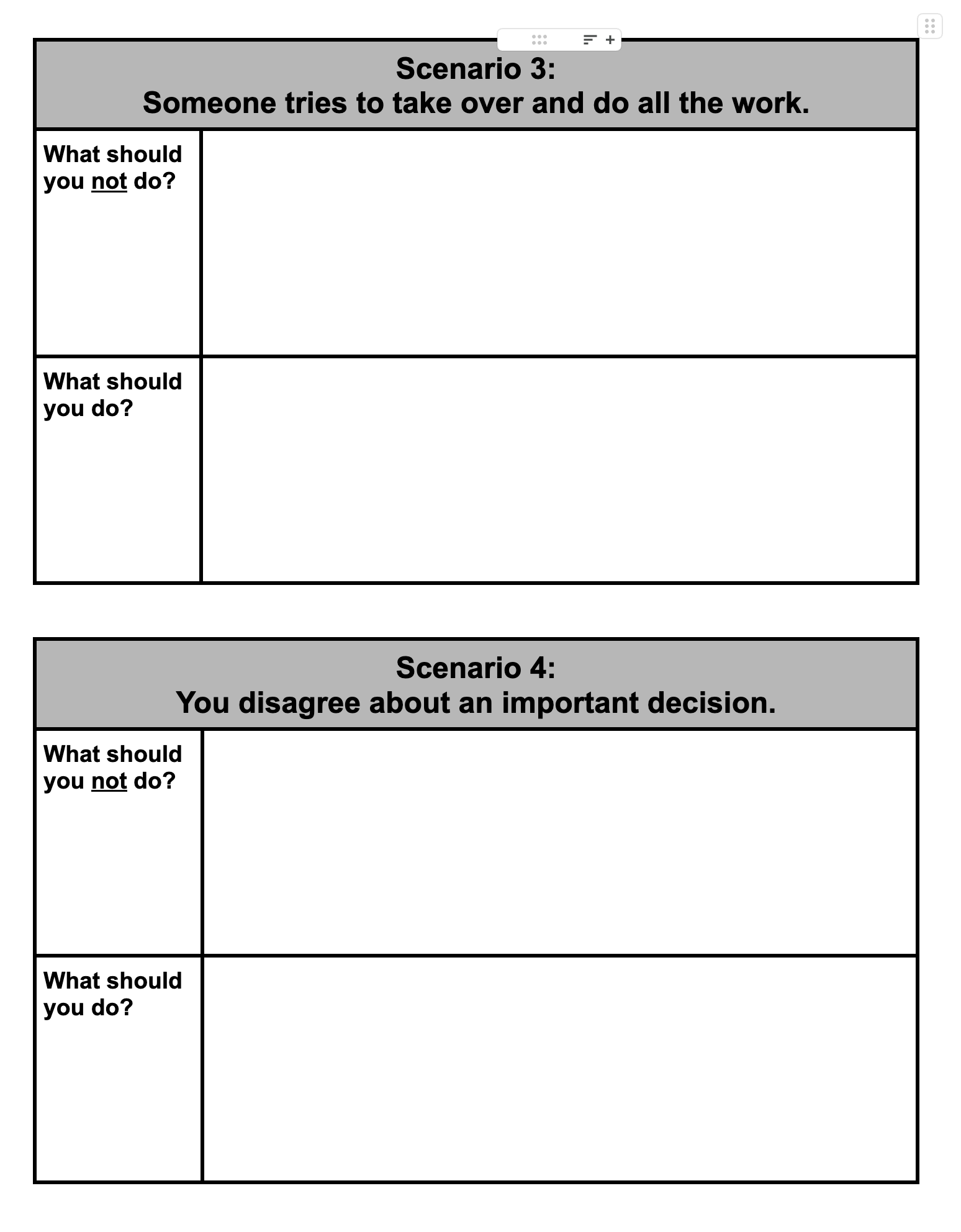
As the project progresses, find moments to incorporate the team collaboration contract into the lesson. This can happen in reflective bell ringer or exit ticket prompts.
One or two weeks into the project, I facilitate an activity where students reflect on how their collaborative work is going.
Here is the slide deck I made for this collaboration reflection activity for the Power of Music Project in 2023.
Students first reflect around various issues that arise during collaborative work using this handout. For each scenario, students need to first identify how not to react to that scenario and then describe the best way to react to that scenario. Teams share out their responses in a class discussion before considering the next scenario.
Then students use this handout and their team contracts to reflect on what’s going well with their team collaboration and what could be going better. Students discuss these amongst each other in their group.


